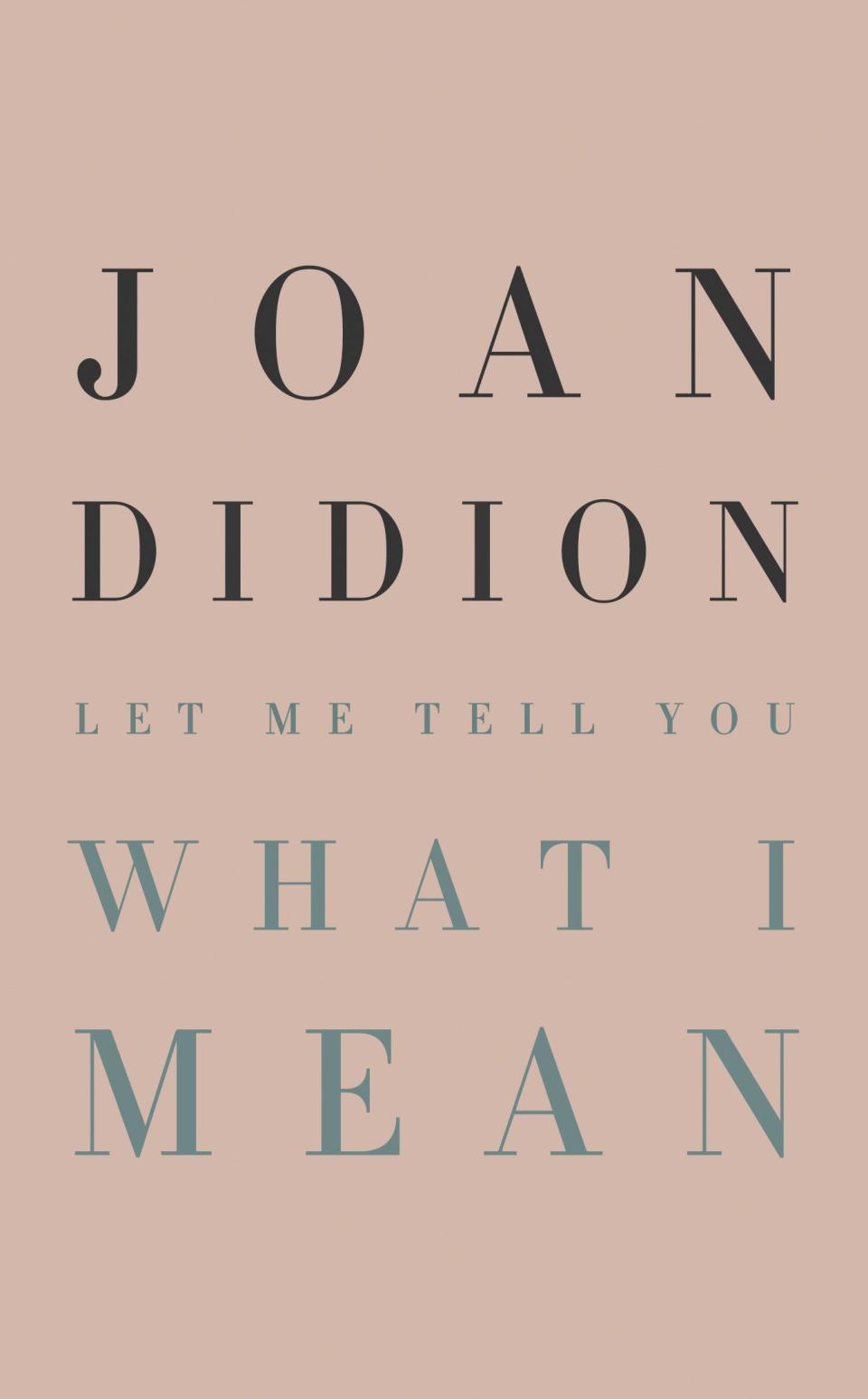'Let Me Tell You What I Mean': New essay collection affirms Joan Didion’s mastery
- Oops!Something went wrong.Please try again later.
The tide of “New Journalism” that flooded the late 1960s and ’70s may have been dominated by the exclamation marks, manic italics and machismo of Tom Wolfe, Norman Mailer, or Hunter S. Thompson, but the lower-key voice of Joan Didion has outlasted, and outperformed, those swaggering peers. Didion’s latest volume, “Let Me Tell You What I Mean” (Knopf, 192 pp., ★★★★ out of four), makes that case easily with a dozen previously uncollected pieces from 1968 to 2000.
Slim and elegant as Didion’s public persona remains at age 86, the book traces her journey and development as a writer of magisterial (a word she would never use) command and finely measured style. She brought new eyes to the American scene, whether charting the disconnect between traditional and hippie media – in the book’s opener, “Alicia and the Underground Press” – or with piercing observations of boldfaced names including Ernest Hemingway, Nancy Reagan and Martha Stewart. She intuited the fragmentation that would breed an internet world, and she sensed danger in the shallow myth-making of celebrity journalism.
'The Doctors Blackwell' review: Two remarkable sisters transformed American medicine

Didion came to literature as an army brat Californian, bred from Sacramento’s cultural aridity, whose greatest adolescent trauma was not getting into Stanford. Settling for University of California, Berkeley, she felt lost in her first writing workshop – without ideas, stories, worldliness. “I remember each other member of the class as older and wiser than I had hope of ever being,” she writes, “more possessed of an exotic past: marriages and the breakup of marriages, money and the lack of it, sex and politics and the Adriatic seen at dawn.”
But the American icon who would declare, in her most famous sentence, “We tell ourselves stories in order to live” (from the classic essay, and subsequent book, “The White Album”) wasted no time telling the world what she saw. After an apprenticeship at Vogue magazine, where writing photo captions influenced her less-is-more style, Didion found her voice quickly at the Saturday Evening Post, via the “Points West” column she shared with her husband and screenwriting partner, John Gregory Dunne.
Six of those early essays, all from 1968, are the short-form gems of the new collection, pioneering a coolly detached, analytic tone that shimmered – ironically – with subjectivity. Didion dissected the West Coast anomie and rootless questing that would mark such breakthrough novels as “Play It as It Lays” and “A Book of Common Prayer.” But the incomparable journalism and self-reflection that accompanied every stage of her success would build her legacy. With such late, bestselling memoirs as 2005’s “The Year of Magical Thinking” – in which she described dealing with the sudden death of Dunne (mainly by not dealing with it) – and 2011’s “Blue Nights,” about the passing of their daughter Quintana Roo Dunne, Didion proved she could sustain a cold gaze amid so much pain.
The new book captures the essence of Didion in countless lapidary sentences, especially in the 1998 essay “Last Words,” which deconstructs the lean, “deceptively simple” opening paragraph of Hemingway’s “A Farewell to Arms.” Didion “imagined that if I studied them closely enough and practiced hard enough I might one day arrange 126 words myself. Only one of the words has three syllables. Twenty-two have two. The other 103 have one.”
She would come to match that economy with unwavering vision, setting a standard for those who have inhaled Didion not just as a writer’s writer, but also as a soul – still-centered, self-haunted – of modern experience.
'Kamala's Way': What we learned about the future madam vice president from new biography
This article originally appeared on USA TODAY: Review: New essay collection affirms Joan Didion’s mastery

